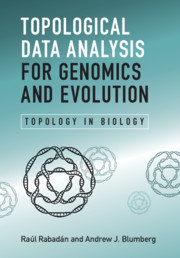Refine search
Actions for selected content:
48287 results in Computer Science
Review of “The Haskell School of Music: from Signals to Symphonies,” by Paul Hudak and Donya Quick, Cambridge University Press, 2018
-
- Journal:
- Journal of Functional Programming / Volume 29 / 2019
- Published online by Cambridge University Press:
- 22 November 2019, e18
-
- Article
-
- You have access
- Export citation
It all starts with entities: A Salient entity topic model
-
- Journal:
- Natural Language Engineering / Volume 26 / Issue 5 / September 2020
- Published online by Cambridge University Press:
- 22 November 2019, pp. 531-549
-
- Article
- Export citation
Localization and obstacle avoidance in soccer competition of humanoid robot by gait and vision system
- Part of
-
- Journal:
- The Knowledge Engineering Review / Volume 34 / 2019
- Published online by Cambridge University Press:
- 20 November 2019, e16
-
- Article
- Export citation

Topological Data Analysis for Genomics and Evolution
- Topology in Biology
-
- Published online:
- 18 November 2019
- Print publication:
- 19 December 2019
Multigroup connectivity structures and their implications
-
- Journal:
- Network Science / Volume 7 / Issue 4 / December 2019
- Published online by Cambridge University Press:
- 18 November 2019, pp. 459-475
-
- Article
-
- You have access
- Open access
- Export citation
Gradual session types
- Part of
-
- Journal:
- Journal of Functional Programming / Volume 29 / 2019
- Published online by Cambridge University Press:
- 18 November 2019, e17
-
- Article
-
- You have access
- Open access
- Export citation
NATURAL FORMALIZATION: DERIVING THE CANTOR-BERNSTEIN THEOREM IN ZF
- Part of
-
- Journal:
- The Review of Symbolic Logic / Volume 14 / Issue 1 / March 2021
- Published online by Cambridge University Press:
- 18 November 2019, pp. 250-284
- Print publication:
- March 2021
-
- Article
- Export citation
Horacio Saggion, Automatic Text Simplification. Synthesis lectures on human language technologies, April 2017. 137 pages, ISBN:1627058680 9781627058681
-
- Journal:
- Natural Language Engineering / Volume 26 / Issue 4 / July 2020
- Published online by Cambridge University Press:
- 18 November 2019, pp. 489-492
-
- Article
- Export citation
User validation in ontology alignment: functional assessment and impact
- Part of
-
- Journal:
- The Knowledge Engineering Review / Volume 34 / 2019
- Published online by Cambridge University Press:
- 14 November 2019, e15
-
- Article
-
- You have access
- Open access
- HTML
- Export citation
Edge-statistics on large graphs
- Part of
-
- Journal:
- Combinatorics, Probability and Computing / Volume 29 / Issue 2 / March 2020
- Published online by Cambridge University Press:
- 14 November 2019, pp. 163-189
-
- Article
- Export citation





